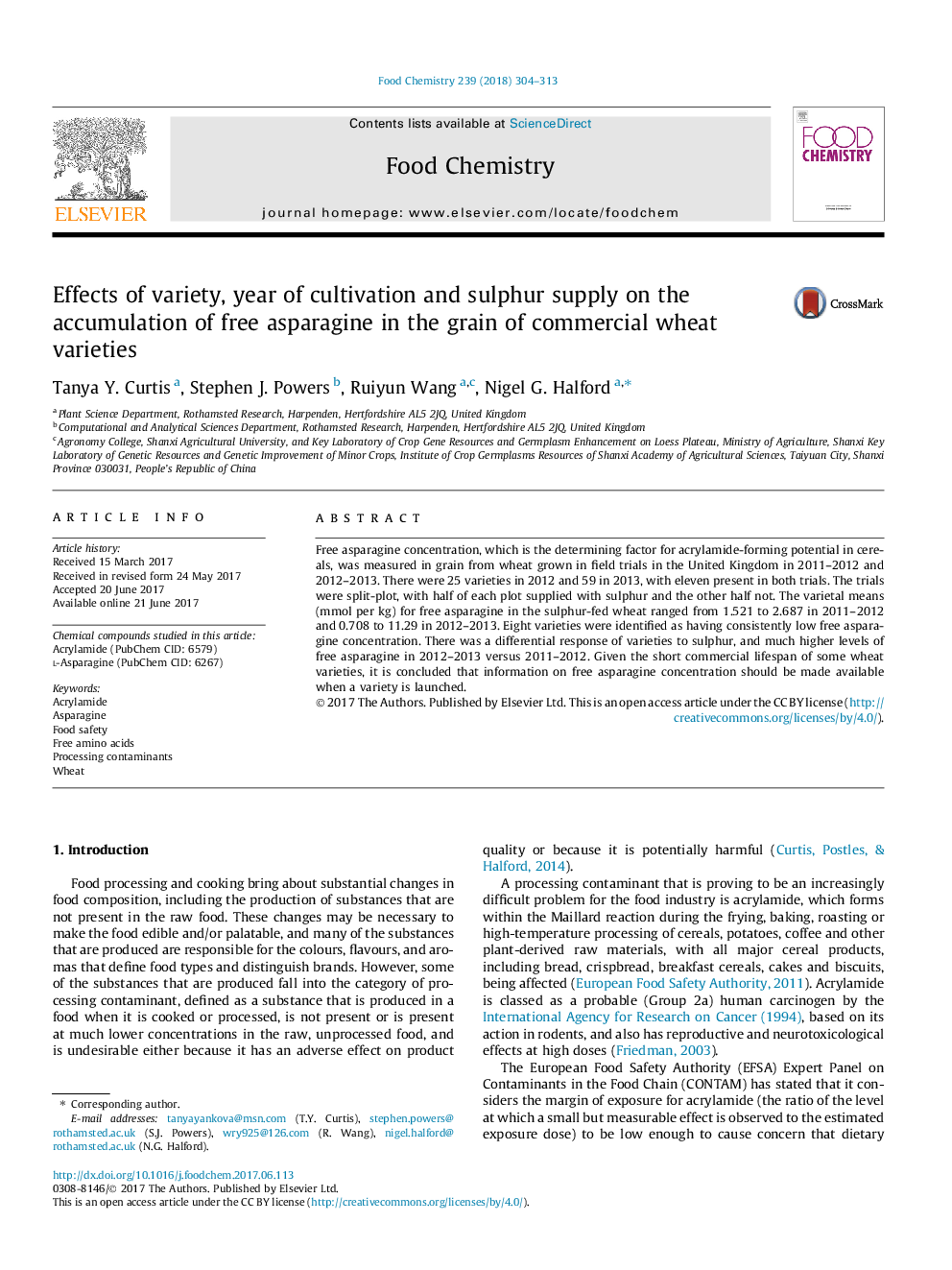| کد مقاله | کد نشریه | سال انتشار | مقاله انگلیسی | نسخه تمام متن |
|---|---|---|---|---|
| 5132974 | 1492053 | 2018 | 10 صفحه PDF | دانلود رایگان |
- Widely differing free asparagine concentration in wheat from two harvest years.
- Wide range of acrylamide-forming potential (AFP) in 73 commercial wheat varieties.
- Eight varieties identified with consistently low AFP, seven of them soft types, but benefit of using a low AFP variety is lost if sulphur supply is inadequate.
- Selecting varieties for low AFP solely on the basis of them being soft would be simplistic.
- Information on free asparagine concentration should be available at variety launch.
Free asparagine concentration, which is the determining factor for acrylamide-forming potential in cereals, was measured in grain from wheat grown in field trials in the United Kingdom in 2011-2012 and 2012-2013. There were 25 varieties in 2012 and 59 in 2013, with eleven present in both trials. The trials were split-plot, with half of each plot supplied with sulphur and the other half not. The varietal means (mmol per kg) for free asparagine in the sulphur-fed wheat ranged from 1.521 to 2.687 in 2011-2012 and 0.708 to 11.29 in 2012-2013. Eight varieties were identified as having consistently low free asparagine concentration. There was a differential response of varieties to sulphur, and much higher levels of free asparagine in 2012-2013 versus 2011-2012. Given the short commercial lifespan of some wheat varieties, it is concluded that information on free asparagine concentration should be made available when a variety is launched.
Journal: Food Chemistry - Volume 239, 15 January 2018, Pages 304-313
